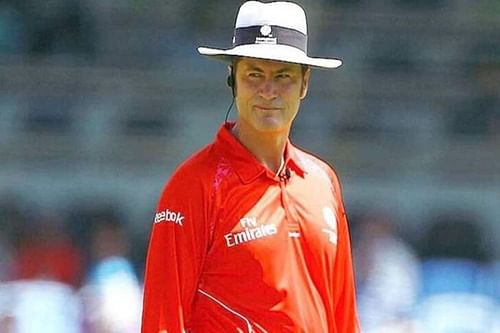
Simon Taufel explains umpiring protocols after Tim Paine dismissal controversy

Australian Test skipper Tim Paine walked out to bat with his team in deep trouble at 98-5 against India at the MCG. After scoring a run, a huge appeal for caught behind was turned down by the umpire.
Indian skipper Ajinkya Rahane and Ravindra Jadeja were convinced that Tim Paine had knicked the ball. Although wicketkeeper Rishabh Pant seemed uncertain about the appeal, Team India opted for a review.
While there was nothing on the Hot Spot, there was a spike on the Real-Time Snickometer (RTS) as the ball passed Tim Paine's bat. What followed was the third umpire requesting the on-field umpire to reverse his decision and adjudge the Aussie skipper out for a caught behind.
The decision sparked a controversy with fans and analysts divided in their opinion. To clear the air, senior umpire Simon Taufel explained the entire process of judgment followed by umpires in such a scenario.
Simon Taufel also explained why the frame after the ball has passed the bat is used to make a fair umpiring decision. Watch the video below:
What did Simon Taufel have to say about Tim Paine's dismissal?
As part of 7 Cricket’s broadcasting team, former international umpire Simon Taufel explained what umpires are required to look at as part of the conclusive evidence protocols.
According to Taufel, the first step is to see an evident deviation. If there is no obvious edge, then Hot Spot comes into play. The final redundancy is the Real-Time Snickometer (RTS). Even within the RTS, the umpires are required to look at the frame after the ball passes the bat as part of conclusive evidence protocols.
“If the ball is close to the bat (or next to the bat), and there is a spike on the RTS while the ball goes past the bat or up to one frame past the bat, then that is deemed to be conclusive evidence,” Taufel said
Tim Paine now involved in 2 controversial dismissals in the same Test match
Tim Paine was at the center of an umpiring decision that evoked a debate for the second time in the same Test match. The player was involved in a controversy in the first innings of the match about a run-out call. However, on that occasion, the review technology worked in the Australian captain’s favour. Watch the video below: